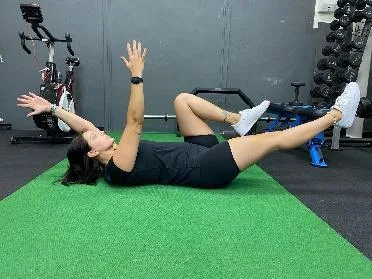When you find out the amazing news that you are expecting and growing a little bean inside of you, you may find it a little hard or even a bit daunting knowing what you can and can’t do when it comes to exercise. During the first trimester you might find you are feeling a little more tired than usual (This does get better) and training might not be a top priority on your list of things to do, however it will help increase those low energy levels and get your endorphins flowing. It will also keep you in a good routine that will follow into your second and third trimester. We are not asking that you start anything new that you may find challenging but to simply keep doing what you are doing or to keep moving. There is a long list of benefits to training during pregnancy such as preventing pregnancy related postural pain as well as other pregnancy related problems such a diastasis recti, pelvic floor weakness and prolapse. It can help to prevent gestational diabetes that can occur during the later stages of pregnancy.
How to adapt your workouts
During your first trimester you will only need slight changes to your current workout routine (this will be dependant of your fatigue), coming into your second trimester is where majority of changes will need to happen to your exercise programme. Your weights should be lightened (around 5-10%). During this trimester noticeable changes happen to the body such as a growing bump. Exercises that were once of ease may not be so comfortable anymore.
All prone (front lying) exercises and anything supine (lying flat on your back) now need to be adapted, prone exercises can be carried out on all fours and supine exercise can be done on an incline where possible. As your bump gets bigger your centre of gravity will start to shift meaning that your balance can be impaired and external aids for support may be needed to conduct exercises, this can be something as simple as holding onto the wall or a chair. Abdominal separation now needs to be taken into consideration and any crunching or core rotation movements should no longer be part of a programme and replaced with stabilizing or and pelvic floor engagement exercises. By the third trimester we will need to look at lowering the weights again (by another 5-10%) and again adapt any exercises for that growing bump.
Not Suitable During Pregnancy

Crunch

Russian Twist
Pregnancy Safe Exercises

Bird Dog



